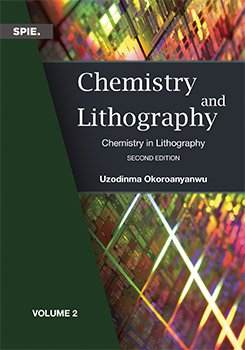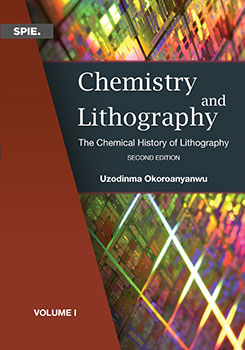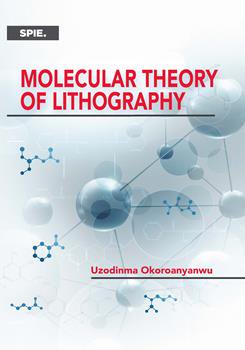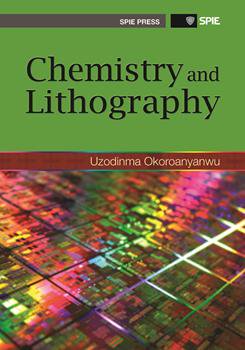
Uzodinma Okoroanyanwu, a research associate professor in the department of polymer science and engineering of University of Massachusetts at Amherst, conducts research aimed at developing functional materials, patterning methods, and devices used in electrochemical energy storage; chemical sensing; printed, flexible, flexible/hybrid and wearable electronics; and electromagnetic interference shielding. He is the founder of Enx Labs, a company that translates some of his research results into devices and instruments that help to improve the human condition and sustain the environment. He worked previously at Advanced Micro Devices, where he spent 12 years conducting research on advanced lithography and on organic polymer memories, and at GLOBALFOUNDRIES, where he spent 4 years conducting research on advanced lithography. He is the author of several books, including Chemistry and Lithography (SPIE Press & John-Wiley & Sons, 2010), Molecular Theory of Lithography (SPIE Press, 2015); Chemistry and Lithography, 2nd ed., Vol. 1: The Chemical History of Lithography (SPIE Press, 2020); and most recently, Chemistry and Lithography, 2nd ed., Vol. 2: Chemistry in Lithography (SPIE Press, 2023). A holder of 37 U.S patents, he was educated at The University of Texas at Austin, where he earned the following degrees: Ph.D. physical chemistry (1997), M.S. chemical engineering (1995), M.A. physical chemistry (1994), B.S. Chemistry and Chemical engineering (1991). He is a fellow of SPIE, the international society for optics and photonics, as well as an associate editor of the Journal of Micro/Nanopatterning, Materials, and Metrology.
This will count as one of your downloads.
You will have access to both the presentation and article (if available).
Initial experience establishing an EUV baseline lithography process for manufacturability assessment
This course, based on the book Chemistry and Lithography, 2nd ed., Vol. 2: Chemistry in Lithography (SPIE Press 2023, PM353), explores the chemical basis of advanced lithography, which in all its essential aspects is about chemical transformations that are designed to print a relief image of an object on a flat surface. The object may be a mask containing patterns of integrated circuit devices; the flat surface may be a silicon wafer coated with either radiation-sensitive resist, or imprint resist, or block copolymer resist. Exposing the radiation sensitive resist film to actinic radiation, followed by baking induces differential solubility in the exposed areas of the resist relative to the unexposed area, such that upon development, the resist film is transformed into a three-dimensional relief image of the mask. Pressing the mask down with sufficient force onto a heat-melted imprint resist film forces the resist to flow into and fill topographical cavities on the mask, such that upon cooling and solidification of the resist, followed by release of the mask, a negative replica of the mask is realized on the resist film. Thermal and/or solvent annealing of the block copolymer resist film on a wafer with appropriate guide patterns induces phase separation and self-assembly of the block copolymer into domains that replicate the shape of the guide patterns on the mask. Underlying most of the above transformations are distinct chemical reactions that are mediated by electrons. By drawing on fundamental, theoretical, and experimental studies of molecular processes in advanced lithography, we will deconstruct lithography into its essential chemical principles. We will examine and show how electrons mediate the photo- and radiation chemistry of exposure processes of resists (be they organic, organometallic, polymeric or inorganic), as well as exposure tool sources (be they mercury arc lamp, laser, electron beam, ion beam, or plasma); colloid chemistry of resist formulation and dissolution (be it for positive tone or negative tone development), wafer and mask cleaning processes; electrochemistry of mask absorber corrosion, electrostatic discharge, and electromigration; surface chemistry of wafer and mask priming, along with thin film interfacial effects; materials chemistry of resists, exposure tool optics, and masks; environmental chemistry of the exposure environment (be it water, air or vacuum), as well as of resist poisoning; process chemistry and mathematical modeling of wafer and mask making lithographic unit operations, including substrate priming, coating, exposure, pre- and post-exposure baking, development, and post-exposure stabilization processes; inorganic and organometallic chemistry of mask defect formation and repair, of mask contamination from inorganic salt (haze) crystal growth, carbon deposition and oxidation; and polymer chemistry of directed block copolymer self-assembly.
View contact details
No SPIE Account? Create one





